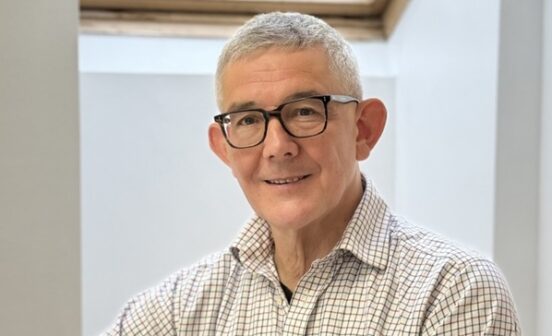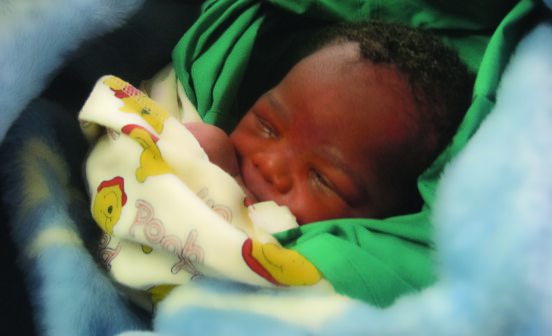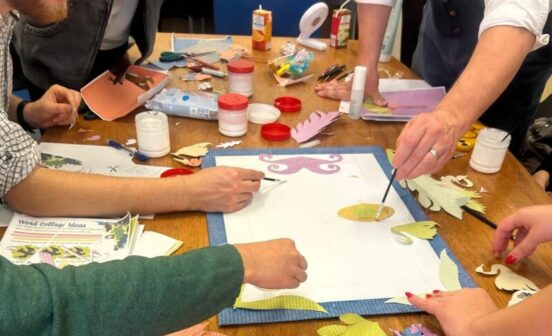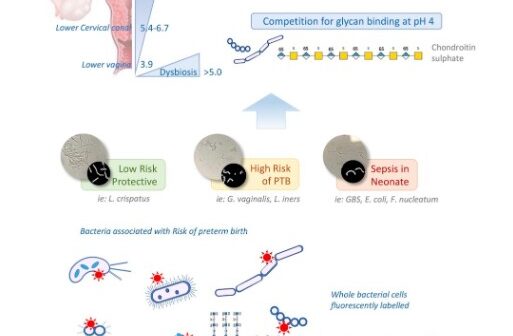PartnershipPrevention Helping feed our most premature babies
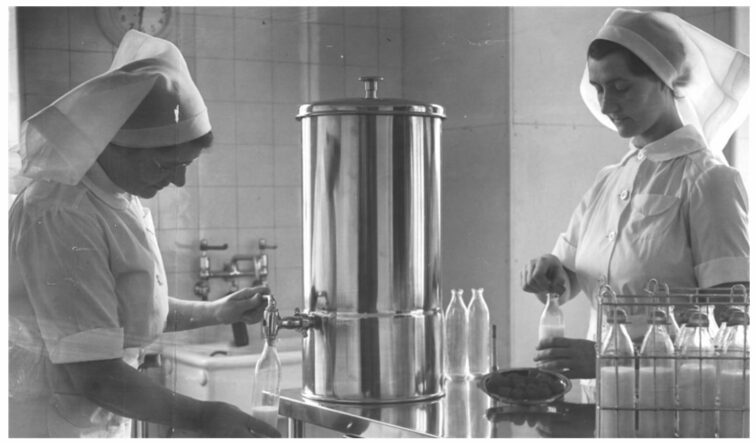
Established in 1939, the milk bank at Queen Charlotte’s and Chelsea Hospital is the world’s oldest continuously operating milk bank. It provides donor milk to around 500 extremely premature and sick babies each year.
Bridging the gap
“The first choice of milk for our tiniest premature babies is, of course, their mother’s own milk” explains Dr Aniko Deierl, a consultant neonatologist at Queen Charlotte’s & Chelsea Hospital. But for some families, whose babies arrive in the world much earlier than expected, this just isn’t always an option.
“When babies are born too early, mum’s body may not be ready to produce milk yet and they need support to start expressing and collecting enough to feed their baby. In the meantime, we can offer donated breastmilk from the milk bank at Queen Charlotte’s & Chelsea Hospital to help bridge the gap,” explains Dr Deierl.
Born too early
Pre-term birth, when babies are born before 37 weeks of pregnancy, is the leading cause of death in children under five across the world and those born prematurely can be impacted by a range of different health and cognitive issues as babies and also later in life. Researchers at the National Institute for Health and Care Research (NIHR) Imperial Biomedical Research Centre (BRC) are working hard to find ways to reduce early births but, in the meantime, doctors and researchers are committed to supporting families to have the best possible outcomes.
“We can offer donated breastmilk to help bridge the gap” – Dr Aniko Deierl, consultant neonatologist
A potential complication for the most vulnerable premature babies, born before 32 weeks, is a serious stomach condition where tissue in the bowel becomes inflamed. In severe cases, this tissue can die and need to be removed with an operation. Necrotising enterocolitis (NEC) affects somewhere from 6 – 8 per cent of very premature infants, which could be up to 650 babies in the UK per year. It can be life threatening, in severe cases 1 in 2 will die or live with long term neurological disability and nutritional failure.
Nature’s design
Formula milk that has been specially developed for premature babies is not always suitable for the earliest babies. “It tends to be based on proteins from cow’s milk, which are difficult for very small, fragile digestive systems to handle,” says Dr Deierl. Human breast milk, however, is much more easily digested and absorbed because it is biologically designed to be consumed by human babies. This means it is much gentler on tummies which haven’t yet fully developed.
Dr Deierl and her colleagues know the impact that donated breast milk can have for their smallest patients. “In our unit, where babies born before 32 weeks are offered donated breast milk as standard, the rate of babies being admitted with NEC is roughly halved.”
“In our unit, where babies born before 32 weeks are offered donated breast milk as standard, the rate of babies being admitted with NEC is roughly halved” – Dr Aniko Deierl, consultant neonatologist
Understanding the evidence to reduce complications
Dr Jay Banerjee is an NIHR Imperial BRC supported researcher and neonatal consultant at Imperial College Healthcare NHS Trust. He leads a research team aiming to better understand why some babies develop NEC and hopefully find a way to treat them more quickly, or even prevent it. “We don’t really understand why NEC happens, and that is where the research comes in.
“Many premature babies need blood transfusions to replenish blood supply in the body due to repeated blood tests. We noticed that in some premature babies who received milk feeds while being given a blood transfusion, they were more likely to develop NEC than those who didn’t.”
Dr Banerjee thinks that when babies receive milk feeds at the same time as a transfusion, they are unable to absorb the oxygen from the new blood in their stomach because their very fragile, brand-new stomachs are focused on the task of digesting milk. This could be one explanation as to why tissue in the digestive system can die and result in a number of reactions and severe complications that Dr Deierl and her team see in their neonatal unit.
Dr Banerjee is trying to understand which babies are most at risk of developing NEC so they can treat them earlier or even prevent it. They are also investigating whether stopping feeds during a transfusion reduces NEC risk. “When you transfuse and feed a premature baby at the same time, the increased flow of blood in their stomach normally seen in response to feeds just can’t happen because the transfusion is going on.”
Non-invasive monitoring
“Getting nutrition right is so key for premature babies,” says Dr Banerjee. But understanding how babies are responding to treatment requires needles and blood tests, which is a lot for a very small baby to tolerate and can only be done at certain intervals. Premature babies can also deteriorate rapidly.
“Getting nutrition right is so key for premature babies,” – Dr Jay Banerjee, neonatal consultant, Imperial College Healthcare NHS Trust and honorary clinical senior lecturer at Imperial College London
“We’re working with bioengineers at Imperial College London to develop a non-invasive sensor patch that could give doctors minute by minute feedback about how the baby is responding.” These nano-sensors work through the skin and measure levels of glucose, electrolytes and lactate – key markers for how well a baby is doing. Even subtle changes in blood glucose, electrolytes and lactate levels can signal potential for the baby to become very unwell.
“For doctors to be able to see how these parameters in the baby are changing in real time, rather than waiting for the next blood test in a couple of hours, and without the need for invasive procedures, would be a huge improvement in care for our tiniest patients as it would allow us to respond immediately and potentially prevent some serious complications,” said Dr Banerjee.
Big questions for the premature population
People who are born early are at risk of a variety of complications and health conditions from their earliest years and throughout adulthood. “We know that babies born early are at higher risk of immediate complications such as brain haemorrhage and NEC, but it can also affect their neurodevelopment in the medium term. But longer term, for example, people born prematurely are at much higher risk of cardiovascular disease” says Dr Banerjee. “That’s why prematurity is a key theme for the NIHR Imperial BRC, if we can better understand the impact of being born too early, we can hopefully support this population to have better health, for life.”
A selfless act of kindness
Donor milk helps thousands of premature babies across the UK, especially in the early stages, when most mothers can struggle to establish their own milk supply, or if mothers are unable to breast feed due to physical illness.
“In such situations, donor milk is the second-best choice for feeding these vulnerable infants and our goal is to ensure that donor milk is available to every newborn that would benefit from it”, says Francesca March, milk bank coordinator. The majority only need it for a few early days therefore donor breast milk acts as “a bridge to breastfeeding” during these early challenges.
“Donating breastmilk is one of the most precious gifts you can offer – it can be done in the comfort of your own home and collected from your door”, continues Francesca. Donor milk is considered human tissue and so becoming a milk donor is similar to becoming a blood donor. The milk bank recruits actively lactating parents who are less than one-year post-birth.
“Donating breastmilk is one of the most precious gifts you can offer” – Francesca March, milk bank coordinator at Queen Charlotte’s & Chelsea Hospital
All potential donors are asked to complete a health and lifestyle eligibility questionnaire and if they qualify are screened for infections. Milk bank staff are there for donors every step of the way Francesca explains, “registered donors are given clear instructions on how to collect and store milk to avoid contamination, as well as equipment such as labels, sterile bottles to store your breast milk and a thermometer to monitor your freezer temperature daily.”
“Donating my extra milk seemed like the obvious choice.”
Donor, Ronit, discovered our milk bank through a friend. “I became a donor because I knew I was lucky to be able to breastfeed so donating my extra milk seemed like the obvious choice. It also really motivated me to keep pumping when I felt like stopping.
“The process seemed quite complex at first as I was very sleep deprived and there were – understandably – some instructions to follow. However, the milk bank is always very responsive, and it all became clear fairly quickly. It was also good to have instructions so that you know you’re always doing the right thing for the recipients of the milk.
“Donating has been great in lots of ways. After a tough night with a newborn, it really gives you some perspective. It doesn’t take very long but it makes you feel like you’ve done something that day.”
“It is nice to do something anonymously knowing it’s going to a good cause.”
Donor, Ashley, was so grateful for the care and attention she received from the NHS throughout both her pregnancies. She saw becoming a donor as a way of giving back. “Being a donor allows me to say thank you in a less obvious way and in the comfort and privacy of my own home.
“It is also nice to do something anonymously knowing it’s going to a good cause and without the expectations of anything in return. There is quite a bit of time allocated to complete a donation so my advice to new donors would be to avoid putting pressure on yourself to donate in the shortest time possible. Your own baby should be the priority.”
“Thank you for feeding my baby when I couldn’t.”
Mariia gave birth to Olivia prematurely at 28 weeks. Mariia relied on donor milk to feed her baby until her own milk came through. “It gave me some peace of mind to know that Olivia would be receiving breast milk until I could start producing my own. Knowing that Olivia would receive the vital nutrition she needed (alongside my colostrum) was so important as Olivia cannot tolerate cow’s milk or formula. I want to thank the milk bank from the bottom of my heart. Thank you for feeding my baby when I couldn’t.”
“The most special gift of all”
Gillian Weaver MBE worked at the milk bank for 30 years and is a pioneer in the milk banking field. “Throughout my time I was able to hear from donors and recipient families about how donor milk has made a profound difference to their lives. I was most touched by being able to support milk donation from bereaved donors whose babies had sadly died and for whom donating breastmilk to benefit other babies is the most special gift of all.”
85 years of milk banking
Established in 1939, the milk bank at Queen Charlotte’s & Chelsea Hospital is the world’s oldest continuously operating milk bank. “It provides donor milk to around 500 premature and sick babies each year. There are an average of 60 donor mothers per year supporting the milk bank at any one time which highlights its significant importance today”, says Fiona Stubbs, lead nurse for neonates.
Queen Charlotte’s Hospital was a funded charity when the milk bank, which pre-dates the NHS, began. In 1939, infant mortality rates were high and premature births were increasing. This led to higher rates of delayed milk production and a clear need for the new milk bank service. Edith Dare, head matron of the hospital, was the first director of the milk bank and introduced an innovative training programme for midwives and nurses using cutting-edge techniques and technologies.
“Due to the lack of refrigeration at the time, dry ice was used, and the milk was frozen immediately after it reached the ‘bureau’ (how the milk bank was referred to prior to World War II) and was pasteurised”, says Dr Tanya Cassidy, cultural historical researcher and author of ‘Banking on Milk: An Ethnography of Donor Human Milk Relations’.
Original donors were from west London boroughs and only mothers who had carried healthy infants to full term were accepted. They underwent thorough tests, much like donors today, and received a nominal payment. This gesture ended following research on payment for blood donation in the 1970s.
Surviving through history
The milk bank has survived many historical milestones, including World War II and the discovery that HIV could be transmitted via breast milk, as well as the exponential growth of the formula industry, which impacted breastfeeding and potential donor rates. Dr Cassidy explains, “After the war, there were more women in the work force and this meant that they were not as supported to feed their infants, which contributed to a reduction in breastfeeding rates. The milk bank therefore suffered with fewer potential donors.”
“In the 1980s, as with the recent coronavirus pandemic, there were concerns that HIV was transmitted via breast milk and this further impacted negatively on milk donations until it was confirmed that pasteurisation kills HIV.”
Future growth
The milk bank currently processes approximately 300 litres of donated breast milk each year and has recently embarked on a period of growth and transformation. “We hope to raise the visibility and understanding of our milk bank within the community, to expand our donor pool and grow our donor breast milk supply. This will support our goal to promote equity of access to donor milk and ultimately extend our offer to all newborn babies who would benefit from its use,” says Fiona. “Our vision is to help as many babies as possible through the selfless acts of our donors.”
Currently, an average day involves pasteurising breast milk donations and sending off samples to microbiology. “At the beginning of the day and towards the end, we check if there is enough milk in the freezer on our neonatal unit. We are also busy sending out questionnaires and information leaflets, registering new donors, posting donor packs and liaising with our volunteer drivers who collect our milk donations”, explains Claudia Beck, milk bank supervisor and technician.
The milk bank would not be possible without Cosmic charity, who provide invaluable support and funding for the children’s and neonatal intensive care units at St Mary’s and Queen Charlotte’s & Chelsea hospitals, including a much-needed refurbishment of the milk bank itself in 2023. The refurbishment has created extra space to collect, pasteurise and store milk which has enabled the Trust to provide a consistent and increased supply of milk to our patients and we have been able to extend the service to other NHS trusts too.
“As we celebrate the 85th anniversary of this service, we want to say a huge thank you to all our wonderful donors who have helped our premature and sick babies and families over the years. Your donations have been lifesaving,” says Fiona.
Individuals who are interested in becoming milk bank donors can call our milk bank between 09.30 to 14.00 on weekdays on 020 3313 3559, email imperial.milkbank@nhs.net, or visit our website.

